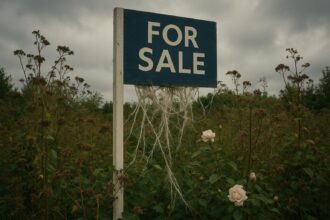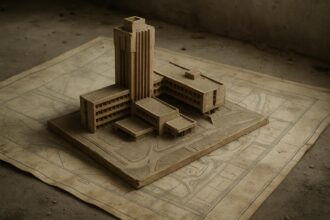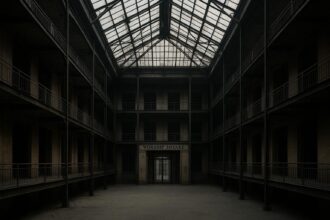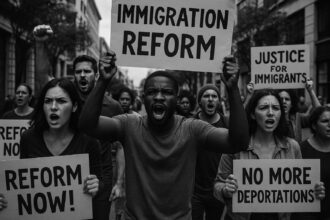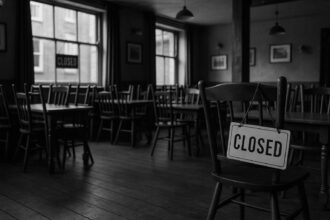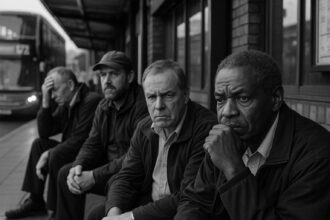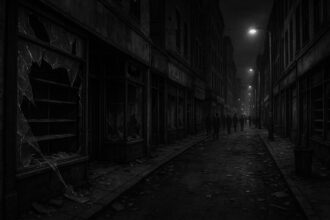Amid construction disruption and rising rents, Denver’s Lavender Hill cultural district is gaining momentum with new community spaces, public art, and events like drag brunches and Winter Pride, aiming to establish a lasting queer cultural and economic hub along East Colfax.
On a typical Sunday at Champagne Tiger, the queer-owned French restaurant that has taken residence in the former Tom’s Diner, patrons are greeted not just by the culinary delights but by a palpable sense of community. The restaurant routinely hosts a lively drag brunch, a cornerstone of a burgeoning cultural movement associated with the Lavender Hill Cultural District. Established in 2021, this initiative aims to celebrate LGBTQIA+ identity while fostering economic development and preserving a rich cultural landscape along one of Denver’s most iconic thoroughfares, East Colfax.
Zach Kotel, the district’s founder and executive director, envisions Lavender Hill as a vibrant cultural corridor akin to San Francisco’s historic Castro District. “I always tell people that Lavender Hill is a placemaking project first and foremost,” Kotel remarked, emphasising the importance of creating a distinct sense of place. He explains to straight audiences that it’s similar to Chinatown—an accessible metaphor for a broader understanding of queer spaces. The district’s geographical boundaries extend from Lincoln-Broadway and Colfax corridors to Capitol Hill, incorporating over 30 queer-owned or -serving businesses, including X Bar and Argonaut Wine & Liquor, which serves as gathering spots for the community.
However, this initiative emerges at a critical juncture for Colfax, as the area grapples with upheaval caused by a $280 million bus rapid transit project, alongside escalating rents and safety concerns. The ongoing construction has significantly impacted foot traffic, with some businesses reporting alarming vacancy rates of 18% earlier this year. Chris Donato, co-owner of Champagne Tiger, expressed that, “As I talk to people, they say they’re taking alternate routes, which for a restaurant isn’t a great thing.” While some establishments navigate these challenges successfully, including Champagne Tiger, others have succumbed to the pressures, like Chuey Fu’s and Fox Run Cafe.
Supporters of Lavender Hill see the district as a lifeline, not just symbolically but practically, as they work to establish a formal cultural district task force in partnership with the city. “In Denver, there are historic districts and art districts, but a cultural district is a little bit of its own thing that exists in other places in the country,” Kotel noted. His vision includes a collaborative effort among property owners, nonprofits, and local government to solidify the district’s identity and promote public art, programming during Pride, and strategy for sustaining local queer businesses.
The formation of Lavender Hill is bolstered by research from experts like Amin Ghaziani, a professor at the University of British Columbia, who highlights the critical role of LGBTQIA+ districts. “These urban areas promote policy discussions around sexuality, curate social services, and organize public health services,” Ghaziani explained in a recent email, emphasising the necessity of visible LGBTQIA+ spaces in fostering community engagement and economic vitality.
The economic and cultural significance of Lavender Hill has become increasingly evident, particularly as locals and visitors alike flock to events like the recently concluded Winter Pride. This month-long festival featured drag brunches, music showcases, and sober gatherings, all aiming to foster inclusivity and support local queer businesses. The success of such events could pave the way for future initiatives, as Lavender Hill seeks to extend its visibility and relevance, marking a new chapter in Denver’s dedication to diversity.
In addition to events, Lavender Hill partnered with Denver Parks and Recreation to showcase the area’s queer history through temporary exhibits at Quality Hill Park, promoting storytelling and cultural appreciation. This collaboration reflects a broader mission of not only preserving but celebrating LGBTQIA+ heritage within the public sphere.
As Lavender Hill continues to gain traction, its founders and supporters recognise the journey has only begun. “It’s just the beginning phases of a long-term project,” Donato remarked, expressing optimism that recognition and awareness will grow. This blend of cultural richness and community resilience stands poised to transform not only East Colfax but also the wider landscape of Denver, breathing life into a vibrant district that invites all to partake in its legacy.
 Reference Map:
Reference Map:
- Paragraph 1 – [1], [5]
- Paragraph 2 – [1], [4]
- Paragraph 3 – [1], [6]
- Paragraph 4 – [1], [3]
- Paragraph 5 – [2], [4]
- Paragraph 6 – [1], [4], [7]
- Paragraph 7 – [2], [3], [6]
- Paragraph 8 – [1], [4]
Source: Noah Wire Services
- https://www.bisnow.com/denver/news/economic-development/denver-lavender-hill-cultural-district-lgbtqia-129753 – Please view link – unable to able to access data
- https://www.lavenderhilldenver.org/winter-pride – In December 2024, Denver’s Colfax Avenue Business Improvement District and Lavender Hill Cultural District hosted the city’s inaugural Winter Pride. This month-long celebration featured diverse events such as drag brunches, music showcases, sober gatherings, and holiday-themed festivities. Aimed at fostering inclusivity and supporting local businesses, Winter Pride provided a welcoming space during the holidays, with all events submitted by local queer businesses in Denver and the Colfax Avenue Business Improvement District. Lavender Hill Cultural District did not specifically endorse, sponsor, or support any business or event listed.
- https://lavenderhilldenver.squarespace.com/news/lav-hill-helps-reimagine-cap-hill-parks – In April 2024, Lavender Hill Cultural District partnered with Denver Parks and Recreation to introduce a temporary exhibit at Quality Hill Park in Capitol Hill. This collaboration aimed to highlight the rich history of Denver’s queer community in Capitol Hill and promote storytelling and appreciation for queer culture within public spaces. The exhibit was part of Denver Parks and Recreation’s ‘Reimagine Cap Hill Parks’ project for Quality Hill Park and Governor’s Park.
- https://www.bizjournals.com/denver/news/2024/12/16/new-initiative-lgbtq-district-to-denver.html – In December 2024, the Denver Business Journal reported on the Lavender Hill Cultural District’s efforts to uplift LGBTQ+ businesses. The district, a grassroots nonprofit initiative led by Denver native Zach Kotel, in partnership with the Colfax Improvement District, aims to support and enhance the queer business ecosystem in Denver. The article highlights the district’s focus on hosting events like Winter Pride to boost area LGBTQ+ businesses and groups, with plans to officially propose the new district by the end of the following year.
- https://www.axios.com/local/denver/2024/08/26/champagne-tiger-opens-former-toms-diner-restaurant – In August 2024, Axios reported on the opening of Champagne Tiger, a queer-owned French-American bar and restaurant in the former Tom’s Diner site at 601 E. Colfax Ave. Directed by former Pizzeria Locale brand director Chris Donato, Champagne Tiger aims to transform the space into an upscale cocktail lounge featuring live music and entertainment. The venue hosts drag brunches on Sundays with local performers and operates from 4:30 pm on Wednesdays to Fridays, and from 10 am on weekends.
- https://denverparktrust.org/project/lgbtq-history-exhibit/ – The Denver Park Trust, in partnership with Lavender Hill Cultural District, Center on Colfax, Denver Parks and Recreation, and Capitol Hill United Neighborhoods, created a temporary art exhibit at Quality Hill Park in Capitol Hill. Unveiled on June 1st, 2024, the exhibit highlights the rich history of Denver’s queer community in Capitol Hill and promotes storytelling and appreciation for queer culture within public spaces. The project received funding through the Denver Park Trust’s Community Grant Program and is part of Denver Parks and Recreation’s ‘Reimagine Cap Hill Parks’ project.
- https://denverparktrust.org/news/unveiling-of-lgbtq-history-exhibit-at-quality-hill-park/ – On June 1st, 2024, Capitol Hill residents, Denver Parks & Recreation, Lavender Hill Cultural District, the Denver Park Trust, the Center on Colfax, and Capitol Hill United Neighborhoods celebrated the unveiling of a new temporary exhibit at Quality Hill Park. The exhibit highlights the local history of queer Capitol Hill and is part of Denver Parks & Recreation’s ‘Reimagine Cap Hill Parks’ project. The project received funding through the Denver Park Trust’s Community Grant Program and aims to foster appreciation and awareness for underrepresented stories within public spaces.
Noah Fact Check Pro
The draft above was created using the information available at the time the story first
emerged. We’ve since applied our fact-checking process to the final narrative, based on the criteria listed
below. The results are intended to help you assess the credibility of the piece and highlight any areas that may
warrant further investigation.
Freshness check
Score:
8
Notes:
The narrative is recent, published on June 11, 2025. It references events up to December 2024, indicating timely reporting. However, some information overlaps with earlier reports from December 2024, suggesting partial recycling of content. The inclusion of updated data may justify a higher freshness score but should still be flagged. ([bizjournals.com](https://www.bizjournals.com/denver/news/2024/12/16/new-initiative-lgbtq-district-to-denver.html?utm_source=openai))
Quotes check
Score:
7
Notes:
Direct quotes from Zach Kotel and Chris Donato appear in earlier reports from December 2024, indicating potential reuse. Variations in wording are present, but the core messages remain consistent. No new direct quotes are introduced in this narrative. ([bizjournals.com](https://www.bizjournals.com/denver/news/2024/12/16/new-initiative-lgbtq-district-to-denver.html?utm_source=openai))
Source reliability
Score:
9
Notes:
The narrative originates from Bisnow, a reputable organisation known for its coverage of real estate and economic development. The report includes direct quotes from individuals involved in the Lavender Hill Cultural District, enhancing credibility.
Plausability check
Score:
8
Notes:
The narrative aligns with known developments in Denver’s LGBTQIA+ community, including the establishment of the Lavender Hill Cultural District and its initiatives. The reported challenges, such as the impact of the bus rapid transit project and rising rents, are consistent with previous reports. However, the lack of new, exclusive information may raise questions about the narrative’s originality.
Overall assessment
Verdict (FAIL, OPEN, PASS): OPEN
Confidence (LOW, MEDIUM, HIGH): MEDIUM
Summary:
The narrative is recent and originates from a reputable source, with some recycled content and reused quotes. While it provides a timely overview of the Lavender Hill Cultural District’s efforts, the lack of new information and the reuse of earlier material suggest a need for further verification.






